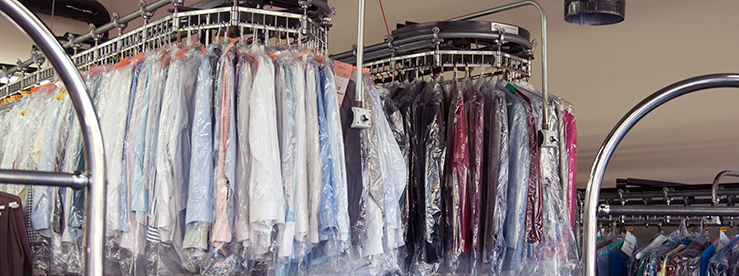OUR PROCESS


John Mattioli says being an entrepreneur has far exceeded his expectations. 




Archives
- August 2018
- October 2017
- September 2017
- June 2017
- February 2017
- July 2016
- June 2016
- May 2016
- March 2016
- February 2016
- January 2016
- November 2015
Categories
Dust Mites
Here at Dry Clean City of Vestavia Hills, we publish information related to your wardrobe care, and also household accessory care. The posting today is to educate you about dust mites.
Just stop and think for a moment about all of the dust mites that are living in your pillow by the millions, eating your dead skin and hair. I know that the thought of all of these dust mites is enough to make you feel sick. Dust mites are a major cause of asthma and allergies, especially to individuals prone to sinus and breathing problems. According to the American College of Asthma, Allergy, & Immunology, approximately 10% of Americans are prone to allergic sensitivity from dust mites. In the Spring, pollen aggravates allergies , and dust mite infestations make it worse. The Fall and Winter months are a serious problem, as we close up our houses and the concentration of dist mites and their feces increases.
Where do they live?
 Beds are a prime habitat (where 1/3 of life occurs). A typical used mattress may have anywhere from 100,000 to 10 million mites inside. (Ten percent of the weight of a two year old pillow can be composed of dead mites and their droppings.) Mites prefer warm, moist surroundings such as the inside of a mattress when someone is on it. A favorite food is dander (both human and animal skin flakes). Humans shed about 1/5 ounce of dander (dead skin) each week. About 80 percent of the material seen floating in a sunbeam is actually skin flakes. Also, bedroom carpeting and household upholstery support high mite populations.
Beds are a prime habitat (where 1/3 of life occurs). A typical used mattress may have anywhere from 100,000 to 10 million mites inside. (Ten percent of the weight of a two year old pillow can be composed of dead mites and their droppings.) Mites prefer warm, moist surroundings such as the inside of a mattress when someone is on it. A favorite food is dander (both human and animal skin flakes). Humans shed about 1/5 ounce of dander (dead skin) each week. About 80 percent of the material seen floating in a sunbeam is actually skin flakes. Also, bedroom carpeting and household upholstery support high mite populations.
The University of Manchester performed a 2005 medical study of pillows that found up to 16 species of fungi in a single pillow. They tested feather and synthetic pillows in a range of ages, finding thousands of spores of fungus per gram of pillow ; more than is found on an average used toothbrush.
Are they harmful? What do they do?
For most people, while they are disgusting, house dust mites are not actually harmful. However, the medical significance of house dust mites arises because their microscopic cast. Skin and feces are a major constituent of house dust that induces allergic reactions in some individuals. There is a genetic predisposition to dust mite allergies, but like many allergies it can also develop over time. According to Darryl C. Zeldin, acting director of the National Institute of Environmental Health Services, in the Wall Street Journal (January 5, 2010, Page D2), 18% to 30% of Americans are allergic to dust mites’ waste products, and almost 50% of American homes have allergen levels that are high enough to cause sensitivity in people who were not previously allergic to dustmites. In other words, high levels of dust mites and their wastes, can cause previously non-allergic people to develop an allergy. In addition to producing allergic reactions, dust mites can also cause nasal polyp growths within the nose.
It is recommended that you wash all of your sheets, pillows, and blankets, every 2 weeks in hot water at least 130 degrees. You may also want to have your bed spread or comforter cleaned on a regular basis.
We Are Easy On The Environment & Easy On Your Wallet!
205-823-1265


